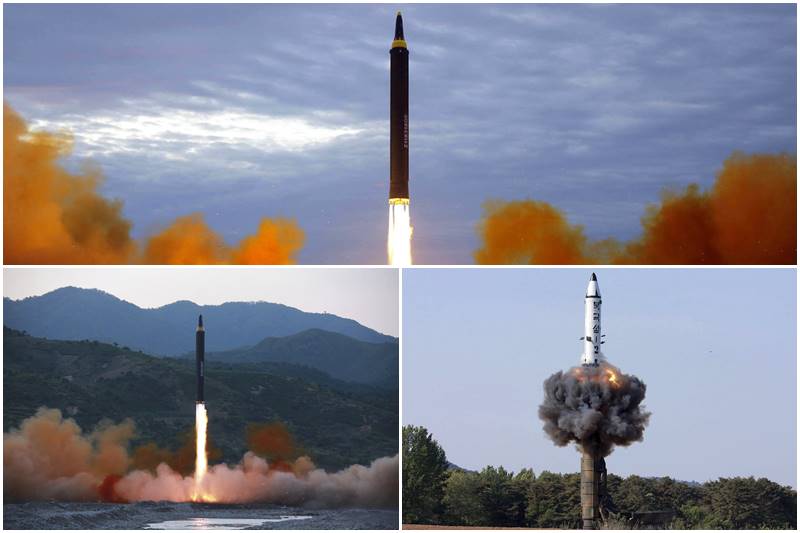
North Korea launched an intermediate-range missile that flew over Japan in its longest-ever flight, showing that leader Kim Jong Un is defiantly pushing to bolster his weapons programs despite US-led international pressure. <br /><br /> Let's take a look of the three North Korean missiles – Hwasong-12, Hwasong-14 and Pukguksong-2, which can cause massive destruction: Hwasong-12 intermediate range missile <br /><br /> On May 14, North Korea fires a newly developed intermediate-range Hwasong-12 missile. It says can carry a heavy nuclear warhead. It suggest that Hwasong-12 would have a maximum range of between 3,700 kilometres (2,300 miles) and 6000 km (3728 miles). On August 29, North Korea launched an intermediate-range ballistic missile, the Hwasong-12, which travelled 2,700 km (1,700 miles), over Japan. The range of this test was significant since North Korea demonstrated that it could reach Guam with this missile. Hwasong-14 intercontinental ballistic missile <br /><br /> Hwasong-14 is a mobile intercontinental ballistic missile developed by North Korea. On July 4 North Korea test-launches its first intercontinental ballistic missile, the Hwasong-14, at a highly lofted trajectory, which coincided with the United States' Independence Day. The Hwasong-14 would have a maximum range of between 6,700–10,000 km (4,200–6,200 miles). -
On July 28 North Korea fires another Hwasong-14, again at a lofted trajectory, but outsider experts say its full range would reach far into the US mainland, including cities such as Chicago.
Pukguksong-2 missile <br /><br /> Pukguksong-2 is a medium-range or intermediate-range ballistic missile which unlike the nation's earlier designs, uses solid fuel. On May 21 North Korea tests Pukguksong-2 missile. As it uses solid fuel, it becomes harder to detect by outsiders before launch. Pukguksong-2 is a solid-fuel rocket that can be launched in minutes. Its operational range is estimated at between 1,200 km (750 miles) and 3,000 km (1,900 miles).